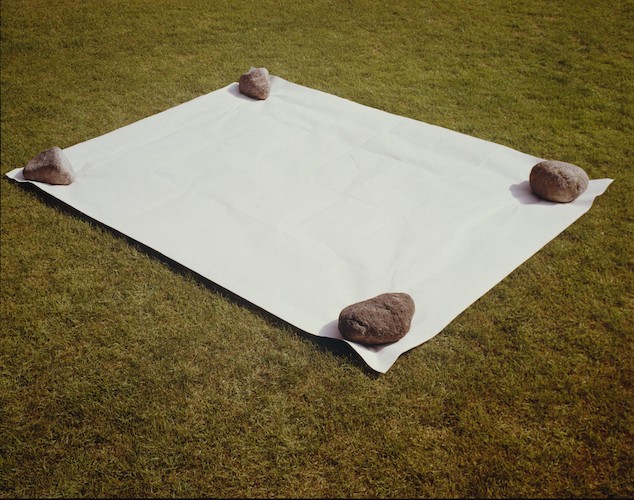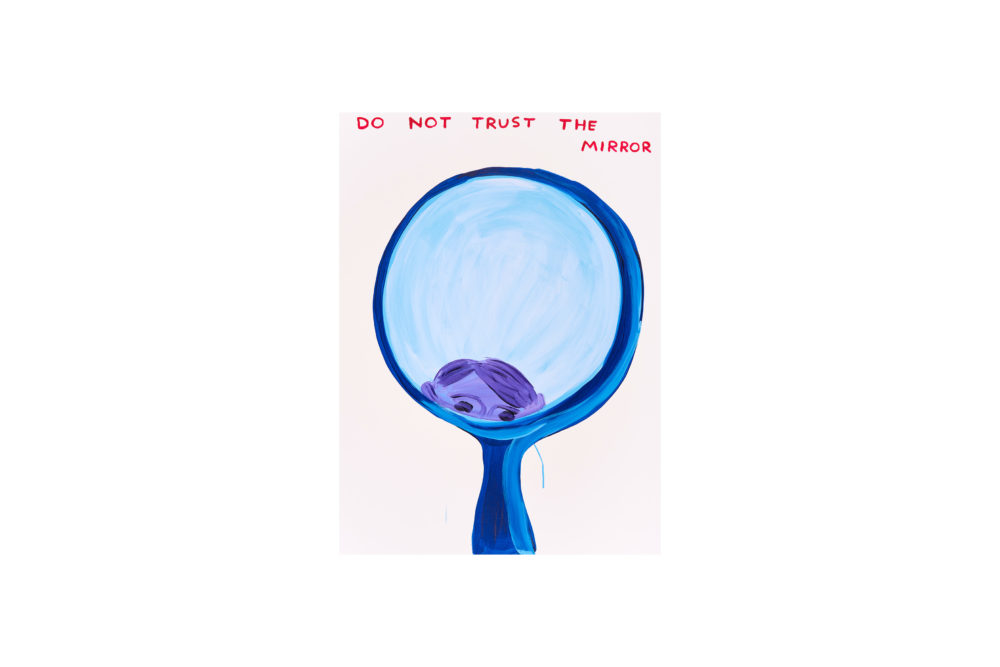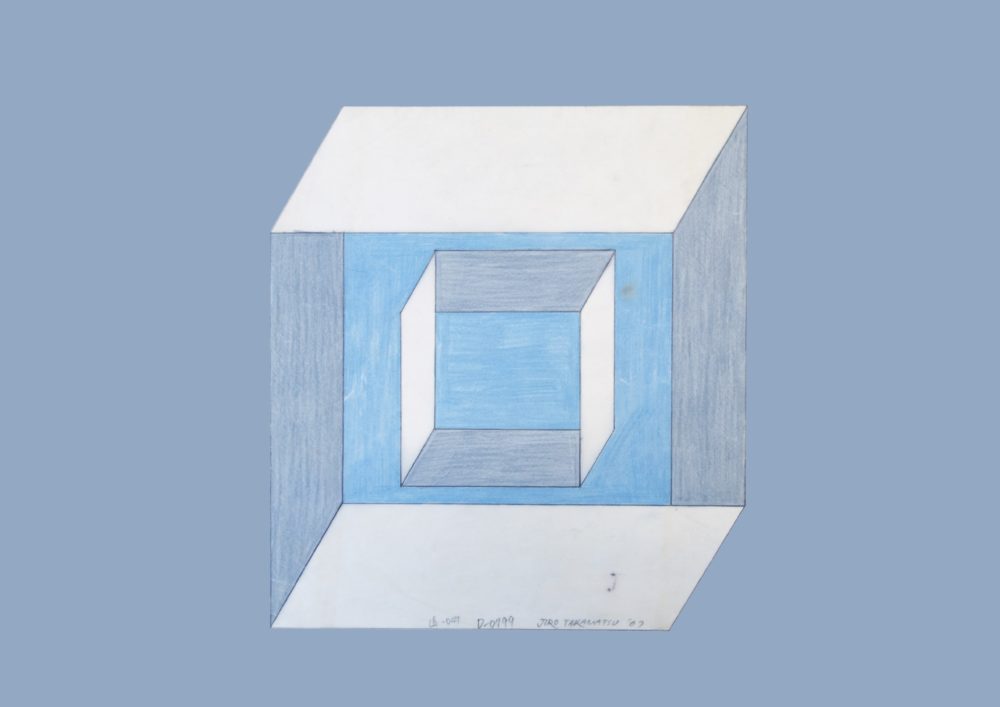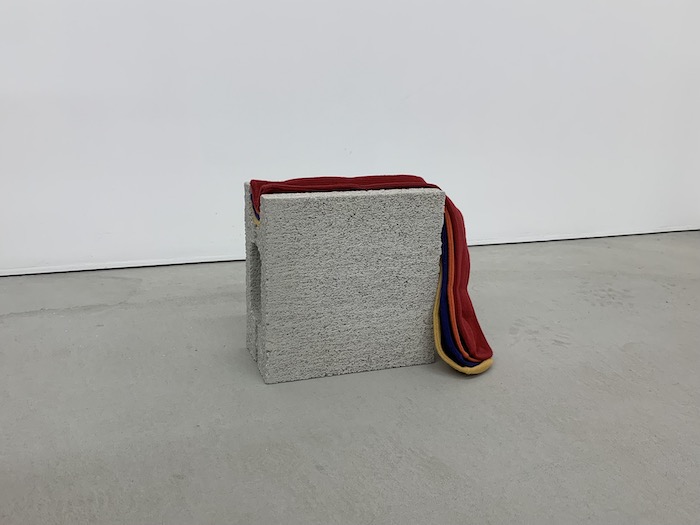Exhibitions
大島成己
Naruki Oshima “Tableau/Bibémus: with Cezanne – Naruki Oshima”

2011 年より大島が精力的に制作しているシリーズ“haptic green”は、被写体への焦点距離を変化させて撮影した数百枚のカットをコンピューター上で格子状に繋ぎ合わせ、一枚の写真として再構成することで奇妙な風景を作り上げました。「木の部分」を視る近い距離と、「全体の木」を視る遠い距離、遠近二つの距離感を混在させ、その両者の振幅のなかで「木」が曖昧に現れることにより、私たちの空間認識は揺さぶられ、未知の視覚体験がもたらされます。このように、視ることを通して、固定化された意味が反復される日常世界から私たちを解放し、外の世界との新しい関係を構築することは、大島作品に 通底する重要なコンセプトの一つです。
そういった作品を制作していく過程の中で、傍には常にポール・セザンヌの存在があったと大島は言います。多視点を用いて、事物を新鮮な眼差しで捉え直しキャンバスに描いたセザンヌの絵画は、大島に大きな示唆を与えてきました。 本展では、“haptic green”シリーズの新作として、後年セザンヌが制作現場とした南仏のエクサプロバンスに赴き撮影をした 作品を展示致します。セザンヌが描いた石切場の作品と同じ構図で撮影をしたオマージュとなる作品をはじめ、独自にセザンヌを解釈し、その思考を「写真」を通じて継承できないかと検証したプロジェクトの成果を、是非ともご高覧ください。
尚、展覧会のオープニングに合わせ、同様に写真を用いてサント=ヴィクトワール山やセザンヌのアトリエを主題とした作品を制作している写真家の鈴木理策氏をゲストにお招きし、作家とのトークイベントを予定しております。合わせてご案内致します。
■作家ステートメント
セザンヌと/感覚の写真へ
写真の一般的な在り方は、一つのパースペクティブにおいて対象世界を縮減し、記号化する。私の仕事はそのようなあり方に抗い、固定化したパースペクティブを壊乱させるところから始まる。例えば、建物ガラスファサードの反射を被写体にした写真イメージをレイヤーに切 り分けて空間を錯綜させたり、クローズアップされた数百枚の写真を一枚に統合して、遠近の距離感を混在したりなどが挙げられる。最近 作は後者の手法によっているが、それは対象の色々なところに焦点を合わせて視線を<集中>化したり、逆にピントをぼかして視線を<拡散>化したりと、集中と拡散が混在する無数のショットによって不安定な風景を構成している。そしてその不安定さにおいて被写体の意味 文脈は後退し、色彩性、触覚性が感覚的に動き始めるニュートラルな世界を現そうとしている。
こうした世界の有り様を写真において探ってきたわけだが、実は常にセザンヌの作品が横にあった。彼の作品における、一元的なパースペクティブではない多視点で捉えられることで起こる空間の<歪み>のようなものを写真でやり直すことができないかとずっと考えてきた。今回の個展では、こうした問題意識を表明するためにセザンヌを敢えて取り上げ、彼が後年よく描いていた、南仏エクサンプロバンスのビベミュにある石切場(Carrières de Bibémus)とその周辺を撮影し、制作している。ここはかつて採石場だったが、セザンヌがモチーフとした頃には既に使われていなかったようだ。街の中心から車で数十分程度離れたところにあり、ここから有名なサント・ヴィクトワール山を臨むことができる。彼のここでの作品は、直線的にカットされた岩と周辺の鬱蒼と生い茂る緑の木々とのコントラストが印象的で、それはコラージュの切り貼りのような違和感をもたらし、空間の<歪み>をより一層強めている。視線の集中と拡散、そして多視点に関連 付けられた風景のコラージュによって石切場のシリーズは、彼の作品の中で最も私の興味を惹いている。
セザンヌのこうした捉え方は私の偏った解釈かもしれないが、誤解、誤読の大らかな展開の可能性を信じながら、今回の個展ではその捉 え方からもたらされる空間の<歪み>を写真においてどのように実現できるかが中心的になる。つまり、それは、対象を一元化し記号化してしまう一般的な写真のあり方を、セザンヌのように物を捉える実感のもとで再組織化しようとするものである。そこでは自身の仕事が、 意味解釈される写真から「感覚の写真」へと向かうことを探ることとなっていく。
大島 成己
-----
In haptic green series that Naruki Oshima has been working on energetically since 2011, the artist has created singular landscapes by joining several hundreds of photographic shots of a subject that were taken with different focal length into a grid on computer screen so as to recompose them as a single photograph. Within these works, Oshima mixed the two kinds of different distances. They are a short and a long one respectively from the eyes to the details of a tree and to the whole image of it. Amidst our visional swing between the short and long distances, the image of the tree ambiguously appears and questions the way of our usual spatial cognition, thereby generating an unknown visual experience. Hence, through the act of seeing, Oshima’s works liberate us from the daily routine that keeps on repeating the fixed meanings to lead us to construct a new relationship with the surrounding world. This is an important element running through all of Oshima’s works.
Oshima says that he always had the art of Paul Cezanne in his mind while he was working on the series. Paintings by Cezanne, which employed multiple perspectives to recapture objects with the fresh eyes, have had a large influence on Oshima.
This exhibition will present new works of the haptic green series that Oshima photographed in Aix-en-Provence in Southern France, the place where Cezanne produced his tableaux in his late years. The exhibits that include the work which paid homage to Cezanne by following the composition of his painting of the quarry are fruitful outcome of Oshima’s project that interpreted the art of Cezanne in an original way and examined whether he can succeed the master’s idea using the medium of photography.
In conjunction to the opening of the exhibition, the gallery is inviting a photographer Mr. Risaku Suzuki, who has also created photographic works on the subjects of St. Victoire Mountain and the Studio of Cezanne, for a talk with Oshima.
■The artist’s statement
Moving towards the photography of senses with Cezanne.
Photography generally reduces the world that it captures to a vision governed by a single perspective, so that it is turned into a sign. My work usually begins by resisting such a structure in photography by destructing a fixed perspective. For example, I create spatial confusion by dissecting a photographic image of the reflections on the glass façade of a building into layers, or join several hundreds of close-up shots into one so that various distances will be sensed to coexist in a single picture. My recent works depend on the latter method, which at once concentrates and defocuses our gaze by joining together countless photographic images that captured different sections of a subject with a sharp or blurry focus, so as to compose an unstable landscape. In the instance of such instability, the original context of the subject recedes to give way to a neutral world in which color and tactility will be actively sensed.
Actually, all the while I have been exploring such state of the world through photography, I always had the work of Cezanne in my mind. I have always thought whether I cannot redevelop in photographs the skewed space in Cazanne’s paintings which derives from having multiple viewpoints that cancel a single perspective. For this exhibition, I decided to purposely shed light on arts by Cezanne to express such concern of mine by photographing a quarry in Bibémus (Carrières de Bibémus) in Aix-en-Provence in south of France that the master had often painted in his late years, as well as the area around it to produce my work. The place was formerly a quarry but it is said to have been already out of use by the time Cezanne painted it. The location is several tens of minutes from the city center and we can view the famous St. Victoire Mountain from there. Cezanne’s paintings of this place are impressive for its contrast of the linearly cut rocks and luxuriantly grown green trees that surrounds them. It produces a sense of discomfort akin to that found in the cut and paste work of collages, and further increases the impression of space distortion. Of all the paintings by Cezanne, the series of works that depicted the quarry interest me most because of the concentration and defocusing of the gaze involved and the collage effect of the landscape that is related with the multiple viewpoints employed.
Such understanding of the paintings by Cezanne could be my biased interpretation. However, as I believe that it is possible to expect great development out of misunderstandings and misinterpretations, in this exhibition, I will focus to explore how I may realize in my photographs the spatial distortion that derives from the way that I understand Cezanne had composed his picture. In other words, through a Cezannean way of realizing objects, I intend to reorganize the state of photography that generally unifies the vision of captured subjects to an extent that it transforms them into a sign. Under this circumstance, my objective will be to find a way to move towards ‘the photographs of senses’ from the photographs that are interpreted of their meanings.
Naruki Oshima








Past Exhibitions






